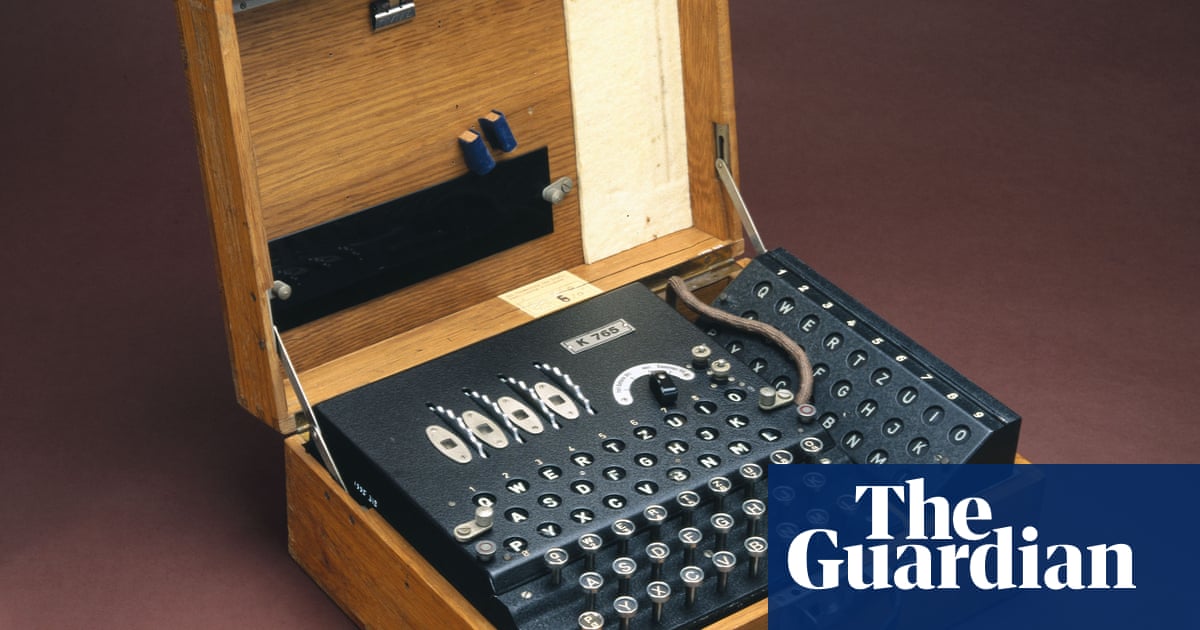The Enigma code was a fiendish cipher that tookAlan Turingand his fellow codebreakers a herculean effort to crack. Yet experts say it would have crumbled in the face of modern computing.
While Polish expertsbroke early versions of the Enigma code in the 1930s and built anti-Enigma machines, subsequent security upgrades by the Germans meant Turing had to develop new machines, or “Bombes”, to help his team of codebreakers decipher enemy messages. By 1943, the machines coulddecipher two messages every minute.
Yet while the race to break the Enigma code has become famous, credited with shortening the second world war by up to two years, and spawning various Hollywood films, experts say cracking it would be a trivial matter today.
“Enigma wouldn’t stand up to modern computing and statistics,” said Michael Wooldridge, a professor of computer science and an expert in artificial intelligence (AI) at the University of Oxford.
The Enigma device used by the Axis powers was an electro-mechanical machine that resembled a typewriter, withthree rotors that each had 26 possible positions, a reflector that sent the signal back through the rotors and a plugboard that swapped pairs of letters.
Its set-up meant that even if the same key was pressed twice, a different letter would be produced each time. What’s more, the initial settings were changed every 24 hours.
“Essentially the enigma devices got their power because the number of possible ways in which a message could be encrypted was astronomically large. Far, far too large for a human to exhaustively check,” Wooldridge said, adding that the “bombes” were crude hardwired mechanical computers, searching through enormous numbers of possible alternatives to decrypt Nazi messages.
Dr Mustafa A Mustafa, a senior lecturer in software security at the University of Manchester, added that the key to the success of Turing and his colleagues was that Enigma had a number of weaknesses, including that no letter would be represented as itself once enciphered.
“It was [a] brute force attack, trying all different combinations out. But with these weaknesses of the Enigma, they managed to do that. They managed to automate this to do it fast enough to be able to crack the code,” he said.
Today, however, the process would be far less arduous, not least because of a technology Turning himself pioneered: AI.
“It would be straightforward to recreate the logic of bombes in a conventional program,” Wooldridge said, noting the AI model ChatGPT was able to do so. “Then with the speed of modern computers, the laborious work of the bombes would be done in very short order.”
Wooldridge added that a range of modern statistical and computational techniques could also be deployed. “And the power of modern datacentres is hard to imagine,” he said, noting modern computing power would have astounded Turing. “Enigma would not remotely be a match for these,” he said.
Using a slightly different approach – that Wooldridge suggested might be slower – researchers have previously used an AI system trained to recognise German using Grimm’s fairytales, together with 2,000 virtual servers,to crack a coded message in 13 minutes.
But while modern computing would have rapidly defanged Enigma, techniques such as the Rivest-Shamir-Adleman (RSA) cipher – a system initially developed in 1977 and based on large prime numbers – remain robust.
“In the case of RSA, it’s the problem of factoring very large numbers. Brute force techniques – looking through all the alternatives – just won’t work on these problems,” said Wooldridge, although he noted such techniques might not hold up against future developments. “If quantum computers ever deliver their theoretical promise, then we may need completely new techniques to keep our data safe,” he said.
But while the Enigma code would not stand up long to modern technology, Mustafa said cracking it during the war was a huge achievement, not least as it was considered unbreakable.
“To be able to crack it – it took them months, more than a year – but to be able actually to do this within the lifetime of the war, it was a huge thing,” he said. “God knows what would have happened if we hadn’t cracked Enigma in time.”
